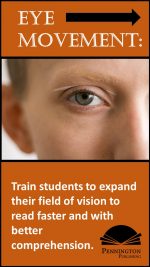How to Teach Main Idea
Finding the main idea is a basic reading comprehension skill, and is often tested on reading assessments. However, basic does not mean easy. Main idea questions are found on every normed and every criterion-based reading comprehension assessment, such as the PAARC and SWBAT Common Core State Standards tests. Following are a workable definition, some important disclaimers, and a few critical strategies which will make sense out of this sometimes challenging task for readers of all ages.
Definition: In Googling the meaning of main idea, these two useful entries pop up:
- The gist of a passage; central thought; the chief topic of a passage expressed or implied in a word or phrase; the topic sentence of a paragraph; a statement that gives the explicit or implied major topic of a passage and the specific way in which the passage is limited in content or reference.
- The main idea of an essay, or other written discourse, is the point that the author is trying to make. It is the most important thing that he wants you to understand about the topic. It is most often stated explicitly, although in narrative essays or in fiction it may be implicit. …
Disclaimers: What main idea is not…
- Main idea is not the same as the topic.
- Main idea is not necessarily the thesis statement.
- Main idea is not necessarily the topic sentence(s).
- Main idea is not found within the narrative domain of writing, unless tagged on by the author to comment on the story such as with a moral at the end of a fairy tale.
- Main idea is not limited to one per reading selection.
- Main idea is not a generalization or something necessarily broad in scope.
- Main idea is not the minor detail of a reading selection.
Finding Main Idea: Strategies that Readers Can Use
Organization: Access the Writing Connection
Knowing the structure of expository writing (informational, explanatory, analytical, and persuasive) can help readers identify main idea(s) in a reading selection. Reading and writing instruction mirror one another. The reading-writing connection is well-established in research.
- The thesis statement tells the purpose or point of view of the exposition. Finding the thesis statement will help the reader learn the parameters of the main ideas. Much
 like an umbrella, the thesis statement is designed to cover the main idea(s) of a reading/writing selection. As a starting point, research demonstrates that about 50% of expository writing includes the thesis statement in the last sentence of the introduction.
like an umbrella, the thesis statement is designed to cover the main idea(s) of a reading/writing selection. As a starting point, research demonstrates that about 50% of expository writing includes the thesis statement in the last sentence of the introduction. - The topic sentences can serve as main ideas in a reading/writing selection. Major details and minor details pertain to, provide support to, and are limited to the topic sentence in any essay body paragraph.
- The main idea(s) can be repeated in expository writing—frequently in the conclusion.
Language of Instruction
Often the language of the reading text itself or the language of test problems can help readers identify main ideas. In addition to using the phase, main idea, the following references are used in expository text and on standardized tests:
- “best” Another answer may be acceptable, but this one most closely fits.
- “mainly” Not completely, but most importantly.
- “chiefly” Compared to the others, this is above the rest.
- “primarily” This means mainly or the chief one, before all others.
- “most likely” A logical prediction or conclusion.
- “most directly” Most specifically.
Process of Elimination: Wanted Posters
If you created a wanted poster to catch an outlaw, back in the Wild, Wild, West, you would want to include a photograph (or illustration) that shows the most identifiable features of the outlaw. The focus, like that in an old John Wayne cowboy movie, would be a close-up shot of the outlaw’s face. That would get across the main idea of what the outlaw looked like. A too specific photograph might be that of the outlaw’s cowboy hat. It is too narrowly focused to help us identify the outlaw. A too general photograph might be that of the outlaw and his friends in the background. This photograph includes too many details of which the outlaw is just one. It’s not specific enough to identify the outlaw and bring him in to justice. Likewise, the careful reader can eliminate what is too specific and what is too general to identify the “just right” the main idea(s).
- If the material lacks specificity and so is hard to identify as the author’s central point(s), then it is too general to be the main idea(s). Imagine a wanted poster that does not focus in on the specific recognizable physical traits that would help an observer identify the accused criminal in person, but instead affords only hints of the accused’s characteristics with a general description, association, or category.
- If the material is too specific and so is difficult to identify as the author’s central point(s), then it is probably a major or minor detail that supports the main idea(s). Picture a wanted poster that focuses in on only a part of the whole. Even if that part is the most recognizable physical trait, the accused criminal will not be identifiable unless there is adequate perspective and context.
The “just right” balance of specificity, perspective and context on a wanted poster will enable the observer to identify the accused criminal. Similarly, that same balance will help readers identify the main idea(s) in a reading selection.
The Science of Reading Intervention Program
The Science of Reading Intervention Program: Word Recognition includes explicit, scripted instruction and practice with the 5 Daily Google Slide Activities every reading intervention student needs: 1. Phonemic Awareness and Morphology 2. Blending, Segmenting, and Spelling 3. Sounds and Spellings (including handwriting) 4. Heart Words Practice 5. Sam and Friends Phonics Books (decodables). Plus, digital and printable sound wall cards and speech articulation songs. Print versions are available for all activities. First Half of the Year Program (55 minutes-per-day, 18 weeks)
The Science of Reading Intervention Program: Language Comprehension resources are designed for students who have completed the word recognition program or have demonstrated basic mastery of the alphabetic code and can read with some degree of fluency. The program features the 5 Weekly Language Comprehension Activities: 1. Background Knowledge Mentor Texts 2. Academic Language, Greek and Latin Morphology, Figures of Speech, Connotations, Multiple Meaning Words 3. Syntax in Reading 4. Reading Comprehension Strategies 5. Literacy Knowledge (Narrative and Expository). Second Half of the Year Program (30 minutes-per-day, 18 weeks)
The Science of Reading Intervention Program: Assessment-based Instruction provides diagnostically-based “second chance” instructional resources. The program includes 13 comprehensive assessments and matching instructional resources to fill in the yet-to-be-mastered gaps in phonemic awareness, alphabetic awareness, phonics, fluency (with YouTube modeled readings), Heart Words and Phonics Games, spelling patterns, grammar, usage, and mechanics, syllabication and morphology, executive function shills. Second Half of the Year Program (25 minutes-per-day, 18 weeks)
The Science of Reading Intervention Program BUNDLE includes all 3 program components for the comprehensive, state-of-the-art (and science) grades 4-adult full-year program. Scripted, easy-to-teach, no prep, no need for time-consuming (albeit valuable) LETRS training or O-G certification… Learn as you teach and get results NOW for your students. Print to speech with plenty of speech to print instructional components.
SCIENCE OF READING INTERVENTION PROGRAM RESOURCES HERE for detailed product description and sample lessons.
FREE DOWNLOADS TO ASSESS THE QUALITY OF PENNINGTON PUBLISHING RESOURCES: The SCRIP (Summarize, Connect, Re-think, Interpret, and Predict) Comprehension Strategies includes class posters, five lessons to introduce the strategies, and the SCRIP Comprehension Bookmarks.
FREE DOWNLOAD TO ASSESS THE QUALITY OF PENNINGTON PUBLISHING RESOURCES: The SCRIP (Summarize, Connect, Re-think, Interpret, and Predict) Comprehension Strategies includes class posters, five lessons to introduce the strategies, and the SCRIP Comprehension Bookmarks.
Get the SCRIP Comprehension Strategies FREE Resource:
![]()
TOO GENERAL/TOO SPECIFIC/ MAIN IDEA (Jesse James Wanted Posters)
Literacy Centers, Reading, Spelling/Vocabulary, Study Skills, Writing




